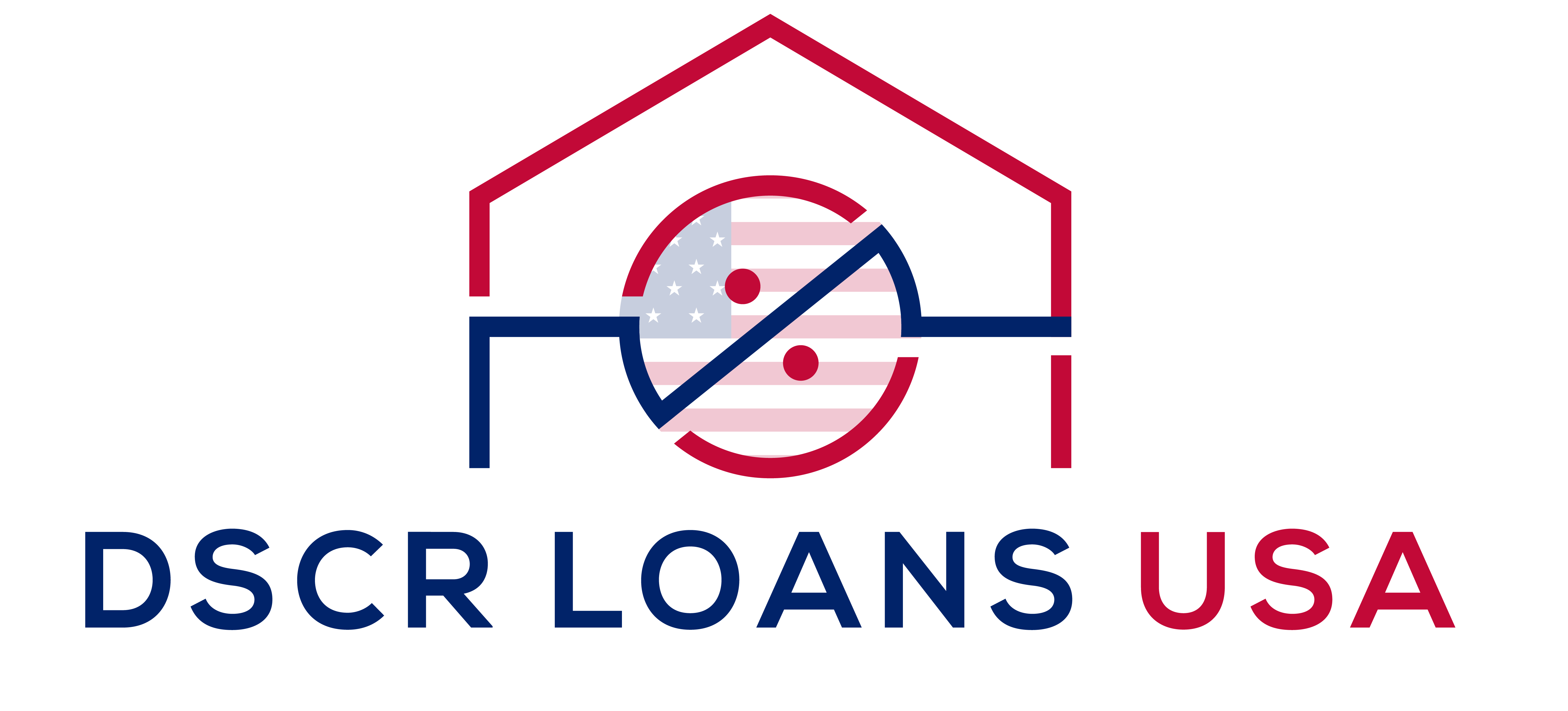Understanding the down payment requirement is crucial when planning to finance an investment property with a DSCR loan.
Required down payments usually start at 20%, a significant factor in the lender’s risk assessment.
This article provides clear insights into dscr loan down payment expectations, how they affect your loan terms, and practical tips for managing this upfront cost.
Key Takeaways
- A standard down payment of 20% is typically required for DSCR loans, with higher percentages up to 30% for increased risk mitigation and stability in loan terms.
- Factors such as a borrower’s credit score and property type influence the down payment percentage required for a DSCR loan, and strong rental income can potentially lower this down payment requirement.
- DSCR loans are secured against the property’s ability to generate rental income to cover debt obligations, with a minimum DSCR ratio of 1.25 usually necessary for loan approval.
Deciphering Down Payment for DSCR Loans

Real estate investment often requires a sturdy financial tool, and DSCR loans serve this purpose for many. Down payments on these loans are not just a financial formality; they’re a cornerstone of risk mitigation, ensuring that lenders can anchor safely even in turbulent markets.
Whether you are an experienced investor or a beginner, understanding the role of down payments in DSCR financing can guide you toward successful investing.
The Standard Down Payment for DSCR Mortgages
Regarding DSCR mortgages, a down payment of 20% is the standard bearer, offering lenders and investors a balanced approach to risk and reward. However, in a flexible market, a peak of 30% is often considered ideal, offering a secure shield against fluctuating property values.
Comparatively, options like FHA or conventional loans can seem like a buoy for first-time homebuyers, requiring as little as 3.5% down for owner-occupied multi-unit properties, but they navigate different waters than the investment-focused DSCR loan.
Factors Influencing Down Payment Amounts
Similar to the ocean’s varied depths, several factors can cause fluctuations in the down payment required for a DSCR loan. A borrower’s credit score, for instance, can serve as a sonar, echoing back opportunities for lower down payments with higher scores. Yet, the nature of DSCR loans, with their non-traditional income verification process, adds an undercurrent of risk that often necessitates higher down payments.
Additionally, certain property types, like raw land or tiny homes, find themselves adrift, not qualifying for DSCR financing at all.
Balancing LTV with Down Payment
Venturing into DSCR loans requires a close watch on the Loan-to-Value (LTV) ratio. A lower LTV implies a larger portion of the property’s value is paid in advance, thus reducing the lender’s risk. A hefty down payment can not only steer you towards more favorable interest rates but also signal to lenders your commitment to maintaining a steady course through your investment journey.
The balance between down payment and LTV often determines the loan’s terms, setting the foundation for the borrower-lender relationship.
Navigating Minimum Down Payment Terrain

Delving into the depths of DSCR loans, one finds the bedrock requirement: a minimum down payment of 20%. This figure isn’t arbitrary; it’s a calculated move by lenders to chart a course through the murky waters of loans not anchored by personal income verification, such as bank statement loans.
Let’s further consider why lenders insist on this minimum and how investors can meet these requirements to obtain financing for their ventures.
Why Lenders Insist on Minimum Down Payments
Lenders, akin to ship captains, must guard against the potential dangers of loan defaults. Minimum down payments are their bulwarks, ensuring that investors have more than just a passing interest in their property ventures. With the personal income anchor often missing in DSCR loans, these financial commitments from borrowers help maintain the vessel’s stability, even when the investment seas get rough.
It’s the larger down payments that often differentiate DSCR loans from conventional mortgages, providing a buffer against the whims of the real estate market.
Lowering the Barrier: Minimum Down Payment Strategies
For many investors, fulfilling the minimum down payment requirement can seem like an overwhelming challenge. However, by trimming the sails of existing debt obligations, the path to a 20% down payment becomes more navigable. Enhancing financial qualifications, such as improving credit scores or increasing cash reserves, can also help investors dock at the desired loan amount without resorting to the lifeboat of additional financing.
Mindful debt management is thus a strategic compass for investors aiming to meet the down payment criteria and secure DSCR loans.
Rental Income’s Role in DSCR Financing

Rental income, being the core of debt service coverage ratio (DSCR) financing, propels real estate investors forward. Lenders scrutinize the property’s ability to generate enough rental income to cover its debt obligations, with a minimum DSCR ratio of 1.25 acting as a beacon for loan approval. This ratio is pivotal, ensuring that the property’s Net Operating Income (NOI) has the buoyancy to keep the investment afloat and service its debts effectively.
Examining the role of rental income, we’ll see how it can reduce down payment requirements and contribute to the essential cash flow calculations for DSCR eligibility.
Using Rental Income to Offset Down Payment Needs
Strong currents of rental income can sometimes alter the down payment landscape. A high DSCR, indicating robust rental income, may convince lenders to agree to more favorable loan terms, sometimes even easing the down payment requirements. Rental income, therefore, not just supports the mortgage payments and associated property expenses but can also serve as a bargaining chip in the DSCR loan negotiation.
By focusing on strategies to boost rental income, investors can enhance their property’s DSCR, making their application more alluring to lenders.
Calculating Cash Flow for DSCR Eligibility
The DSCR calculation focuses on cash flow, determined by comparing the rental income to the property’s monthly expenses, including the mortgage payment. A DSCR above 1 suggests the property can handle its debts with room to spare, signaling strength and stability.
Conversely, a ratio dipping below 1 could raise red flags, hinting at potential negative cash flow and choppy financial waters ahead. Understanding this calculation is essential for investors, as it forms the backbone of eligibility for a DSCR loan.
Investment Property Types and DSCR Loan Terms

DSCR loans, with their ability to harness rental income, offer a versatile financial tool for a broad spectrum of property types through the dscr loan program. These loans cater to various real estate investments, including:
- Urban dwellings
- Rural retreats
- Residential properties
- Commercial properties
As long as the investment properties demonstrate a capacity to generate rental income consistently.
We’ll further compare how different property types, ranging from single-family homes to multi-unit dwellings, influence DSCR loan terms and down payment requirements.
Single-Family vs. Multi-Unit Properties
The down payment terrain for DSCR loans varies with the landscape of the property type. For single-family homes, investors may find themselves charting a course with a down payment between 15-20%. In contrast, the multi-unit properties, with their increased income potential and associated risks, often require a sturdier financial anchor in the form of a 20-25% down payment. It’s a balancing act between potential revenue and the investor’s level of commitment as reflected in the initial investment.
Special Considerations for Unique Real Estate Investments
Not all properties are created equal, and in the realm of DSCR loans, unique real estate investments like short-term rental properties command special attention. The fluctuating income from platforms like Airbnb and VRBO may necessitate a reevaluation of down payment calculations. Additionally, investors who enhance the value of their properties through renovations may find themselves in a position to negotiate reduced down payment requirements, reflecting the increased equity and potential for higher rental income.
Aligning Your Real Estate Portfolio with DSCR Loan Requirements
For investors venturing into DSCR loans, matching their real estate portfolio with loan requirements is like setting a course for favorable conditions. This alignment involves a careful balance between the returns from property investments and personal income, ensuring that the portfolio not only meets the lender’s criteria but also supports the investor’s long-term financial strategy.
As we proceed, we will investigate how a diversified portfolio can increase stability and how strategic actions can strengthen an investor’s eligibility for these particular loans.
Assessing Your Portfolio’s Readiness
A well-structured real estate portfolio is the backbone of a successful DSCR loan application. It should be a mosaic of diversified property investments, spreading risks across different markets and property types, enhancing the portfolio’s resilience. Tailoring this portfolio to align with financial goals and risk tolerance is a decisive step in meeting the stringent criteria of DSCR loans.
A portfolio that capitalizes on rental income and property appreciation demonstrates the financial viability of a DSCR loan candidate, making for a compelling case in the eyes of lenders.
Strategic Moves to Improve Loan Eligibility
Charting a strategic course can significantly improve an investor’s eligibility for DSCR loans. Expanding the portfolio through well-considered acquisitions can mitigate risk and lay the foundation for sustainable profitability. For instance, cash-out refinancing can be a smart maneuver to tap into property equity, providing capital for future investments and potentially enhancing the portfolio’s diversity and strength.
Starting small and scaling up can help investors build experience and financial resilience, which are invaluable when navigating the complex landscape of DSCR loans.
Interest Rates, Prepayment Penalties, and Other Cost Considerations

Apart from the down payment, DSCR loans include a range of cost considerations, such as interest rates and prepayment penalties. These factors are like the currents and tides that impact the total cost of borrowing, shaping the financial journey of the investment property over time.
A thorough understanding of these elements is vital for investors as they gear up for the journey of property financing.
How Down Payment Affects Interest Rates
The interplay between down payments and interest rates is a dance of financial prudence and risk management. Lenders often reserve more competitive interest rates for those who can front a higher down payment, reducing the LTV ratio and thereby lowering the lender’s risk profile. This relationship means that a lower interest rate is not just a product of market conditions but also a reflection of the investor’s commitment to the property.
However, options do exist for those looking to enter the market with a smaller initial investment, albeit at the cost of higher interest rates due to the increased LTV.
Understanding Prepayment Penalties in DSCR Agreements
Prepayment penalties in DSCR agreements serve as safeguards for lenders, ensuring they retain a certain level of interest income even when loans are paid off prematurely. These penalties are often structured as diminishing percentages, shrinking each year, allowing for greater financial flexibility as the investment matures. However, it’s essential to be aware that some states place legal limits on these penalties, especially for residential investments of 1-4 units, which can affect the terms of the agreement.
Crafting a Strong DSCR Loan Application
Creating a compelling DSCR loan application is similar to planning a route with accuracy and expertise. Partnering with lenders who are well-versed in the nuances of DSCR loans can make the journey smoother, as they can provide tailored guidance and support throughout the loan process.
Enhancing the DSCR of your property before applying can significantly enhance the likelihood of approval and the potential loan amount you could be eligible for. This can positively impact your borrowing capacity. Let’s go through the process of documenting income potential, establishing financial stability, and negotiating down payment terms to set a promising path towards loan approval.
Documenting Income Potential and Financial Stability
As an investor, you’ll need to unfurl the sails of your financial acumen and present a treasure trove of financial documents that demonstrate the income potential of your investment property. This includes rent rolls, operating statements, and tax returns, which are critical in delineating the property’s ability to generate sustainable rental income.
Accurate and detailed financial documentation not only showcases the property’s proficiency in income generation but also bolsters your financial standing in the lender’s eyes, aiding in a smoother DSCR loan application process.
Tips for Negotiating Down Payment Terms
Navigating the negotiation waters for better down payment terms requires a combination of preparation and diplomacy. By presenting a coherent financial story backed by meticulous documents, you can enhance your credibility with the lender and potentially secure more favorable terms. Demonstrating the profitability of your existing properties can further strengthen your position, as it shows a track record of successful real estate investments. Understanding the lender’s historical flexibility and the prevailing market conditions can also inform your negotiation strategy, providing a compass for your discussions.
Building a positive rapport with the lender opens up channels of communication, which can be instrumental when it comes to terms negotiation.
Summary
DSCR loans stand as a testament to the power of leveraging property income over personal income in the voyage of real estate investment. We’ve charted the course through down payment strategies, the significance of rental income, and the nuances of varying investment properties, all the while keeping an eye on the horizon for interest rate implications and prepayment penalties. As we dock at the end of our journey, let’s carry forward the wisdom that a well-navigated DSCR loan can be a powerful ally in the quest for real estate success, providing the wind beneath the wings of your investment dreams.
Frequently Asked Questions
What is the typical down payment required for a DSCR loan?
A typical down payment for a DSCR loan is 20%, although a 30% down payment is considered more ideal to mitigate the risk of negative equity.
Can rental income influence my down payment requirements for a DSCR loan?
Yes, strong rental income can lead to more favorable loan terms and potentially reduced down payment requirements for a DSCR loan, as it reassures lenders of the property’s capacity to meet financial obligations.
Are there specific property types that do not qualify for DSCR loans?
Certain property types such as modular homes, mobile homes, raw land, condotels, log homes, dome homes, tiny homes, and commercial mixed-use properties typically do not qualify for DSCR financing.
How does a high DSCR benefit my loan application?
A high DSCR can benefit your loan application by improving your chances of approval, potentially resulting in better loan terms, and influencing down payment requirements.
What are prepayment penalties, and how do they affect DSCR loans?
Prepayment penalties are fees charged by lenders when a loan is paid off before the agreed-upon term. They can affect DSCR loans by impacting the overall cost of paying off the loan early. Legal limitations on prepayment penalties exist in some states, so it’s important to be aware of local regulations.
Ready for More Great Tips and Information? Join Our Email List Today!

